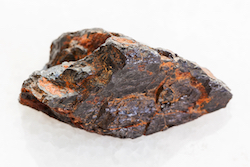A new way of extracting critical raw materials in Europe
Our economy is highly dependent on specific raw materials – a dependency that will only increase in the near future. For example, tungsten and tantalum are two raw materials used in many of our everyday electronic devices. As our use of consumer electronic goods increases, so too does our dependency on the raw materials that power them. The challenge is that materials like tungsten and tantalum are scarce in Europe – and what does exist is of poor quality. Thus, the EU must either import these minerals from outside Europe or process the poor-quality materials found here. The problem with the former is that these minerals are often mined in conflict zones or in conditions that violate human rights. However, processing the poor-quality ore mined here requires the use of high quantities of energy and water – making exploitation costly and unfeasible. To increase Europe’s critical raw material (CRM) independence, the EU-funded OptimOre project developed an efficient process for extracting the minerals found in Europe. Specifically, the project optimises the crushing, milling and separation processes for tungsten and tantalum by means of a fast and flexible production process based on new software models and advanced sensing technology. “OptimOre applies intelligent technologies to create a more efficient and flexible process for crushing and separating tantalum and tungsten ores,” says Project Researcher Josep Oliva. “As a result, our process increases yields by between 7 % and 12 % and energy savings by 5 % over the best processes on the market today.” New models, new technology The OptimOre system introduces new models for crushing machinery and high-precision milling, along with improvements to the gravity, magnetic and flotation separation processes. It also utilises advancements in artificial intelligence to automate various control tools. For example, crushing machinery models are based on equipment type, operational mode and characterisation of the ore. Models look at improving energy consumption, particle size distribution predication and mineral composition. “By using the composition, or element concentration, as a model parameter, we are able to better understand the liberation of critical raw elements during the crushing stage,” explains Oliva. The project also investigated technologies for dry and wet high- and low-intensity magnetic separation. Based on laboratory experiments in the wet high-intensity magnetic separator, a calculation model was created and validated with different materials. “The challenge here was to create a new calculation model with an error of less than 10 %,” says Oliva. “The error for the established model ranges from 8.6 % to 26 %, whereas the average error for the model we created ranges from 1.9 % to just 4.5 %.” Sustainable mineral processing According to Oliva, the OptimOre project helps push the EU to the forefront of sustainable mineral processing technologies and solutions. Furthermore, the technology developed during the project offers added value and new jobs in both the material production and downstream industries. The system also optimises energy and water consumption, thus increasing the overall efficiency of the process and reducing the industry’s environmental footprint. “The technology developed within OptimOre allows for the processing of the low-grade deposit types found in Europe,” adds Oliva. “By using the technology we developed, the mineral processing industry will increase their yield, thus enabling a more efficient way for exploiting critical raw materials here in Europe.”
Keywords
OptimOre, mining, critical raw materials, minerals, tungsten tantalum

